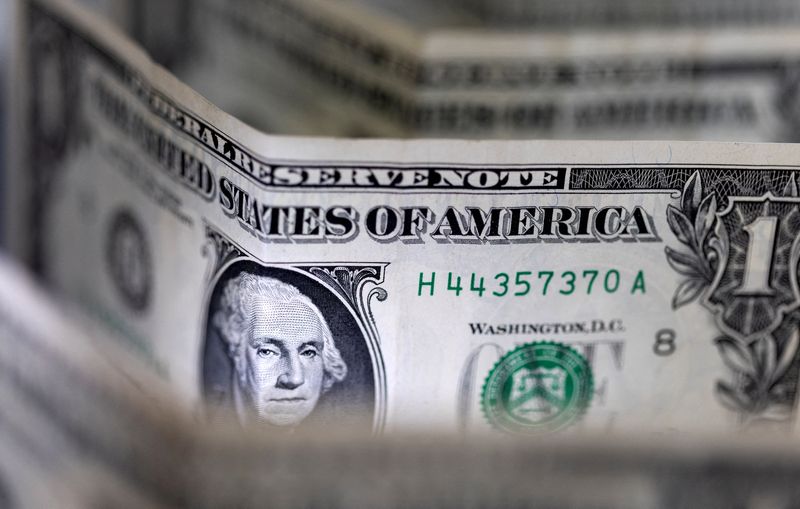Forex
Dollar slips from highs; yen volatile after BOJ shift


© Reuters
Investing.com – The U.S. dollar edged higher in early European trade Friday, adding to the previous session’s strong gains, while the Japanese yen gained after the Bank of Japan shifted its monetary policy.
At 03:15 ET (07:15 GMT), the , which tracks the greenback against a basket of six other currencies, traded 0.1% higher at 101.593, after gaining around 0.7% on Thursday.
Dollar boosted by strong growth data
The dollar surged on Thursday following the release of data showing the grew faster than expected in the second quarter, suggesting a recession is less and less likely in the second half of the year.
This increases the likelihood that the could further hike interest rates, after doing so once more on Wednesday, if it continues to see strong economic numbers across the board.
“One of the clearest messages coming through from the press conference was that Chair Powell felt the Fed was ‘not in an environment where we want to provide a lot of forward guidance’. In other words: listen to the data, not the Fed,” said analysts at ING, in a note.
Traders have turned a little wary Friday ahead of the release of the June , the Fed’s favorite inflation gauge, but by the time of the next Fed meeting in September the policymakers will also have two new CPI reports and two new job reports to digest.
Yen volatile after BOJ shift
fell 0.3% to 139.05, in volatile trade after the ‘s decision on Friday to conduct its yield curve control policy more flexibly, allowing the 10-year yield to move 0.5% around the 0% target.
The JGB yield spiked to 0.575% for the first time since September 2014 before easing slightly to 0.547%, while the yen swung between gains of over 1% against the dollar and a 1.2% loss, as traders digested the potential ramifications.
Euro edges higher after sharp losses
edged higher to 1.0976, after dropping more than 1% on Thursday in the wake of the European Central Bank’s meeting.
The raised interest rates again and kept its options open on whether more increases will be needed to bring down , but President hinted at a pause in its tightening cycle as soon as September.
Inflation data, released earlier Friday, added to the possibility of a pause next month as inflation in the German state of North Rhine-Westphalia, the country’s most populous state, rose an annual 5.8% in July, below the 6.2% expected.
came in at 4.3% in July, a drop from the previous month’s 4.5%, and while climbed to an annual 2.3%, this is still well below most of the other countries in the eurozone.
Elsewhere, edged lower to 1.2787, after dropping over 1% on Thursday, fell 1.1% to 0.6633 after data showed that Australian unexpectedly fell in June, while fell 0.2% to 7.1581.

 Forex3 years ago
Forex3 years agoForex Today: the dollar is gaining strength amid gloomy sentiment at the start of the Fed’s week

 Forex3 years ago
Forex3 years agoUnbiased review of Pocket Option broker

 Forex3 years ago
Forex3 years agoDollar to pound sterling exchange rate today: Pound plummeted to its lowest since 1985

 Forex3 years ago
Forex3 years agoHow is the Australian dollar doing today?

 Cryptocurrency3 years ago
Cryptocurrency3 years agoWhat happened in the crypto market – current events today

 World3 years ago
World3 years agoWhy are modern video games an art form?

 Commodities3 years ago
Commodities3 years agoCopper continues to fall in price on expectations of lower demand in China

 Economy3 years ago
Economy3 years agoCrude oil tankers double in price due to EU anti-Russian sanctions





















